“The Crimean War (October 1853 – February 1856) was a conflict fought between the Russian Empire and an alliance of the French Empire, the British Empire, the Ottoman Empire, and the Kingdom of Sardinia. The war was part of a long-running contest between the major European powers for influence over territories of the declining Ottoman Empire. Most of the conflict took place on the Crimean Peninsula, but there were smaller campaigns in western Anatolia, Caucasus, the Baltic Sea, the Pacific Ocean and the White Sea.
The war has gone by different names. In Russia it is also known as the “Eastern War”, and in Britain at the time it was sometimes known as the “Russian War”.
The Crimean War is known for the logistical and tactical errors during the land campaign on both sides (the naval side saw a successful Allied campaign which eliminated most of the ships of the Russian Navy in the Black Sea). Nonetheless, it is sometimes considered to be one of the first “modern” wars as it “introduced technical changes which affected the future course of warfare”, including the first tactical use of railways and the telegraph. It is also famous for the work of Florence Nightingale and Mary Seacole, who pioneered modern nursing practices while caring for wounded British soldiers.
The Crimean War was one of the first wars to be documented extensively in written reports and photographs: notably by William Russell (for «The Times» newspaper) and Roger Fenton respectively. News correspondence reaching Britain from the Crimea was the first time the public were kept informed of the day-to-day realities of war”. – Wikipedia
The war has gone by different names. In Russia it is also known as the “Eastern War”, and in Britain at the time it was sometimes known as the “Russian War”.
The Crimean War is known for the logistical and tactical errors during the land campaign on both sides (the naval side saw a successful Allied campaign which eliminated most of the ships of the Russian Navy in the Black Sea). Nonetheless, it is sometimes considered to be one of the first “modern” wars as it “introduced technical changes which affected the future course of warfare”, including the first tactical use of railways and the telegraph. It is also famous for the work of Florence Nightingale and Mary Seacole, who pioneered modern nursing practices while caring for wounded British soldiers.
The Crimean War was one of the first wars to be documented extensively in written reports and photographs: notably by William Russell (for «The Times» newspaper) and Roger Fenton respectively. News correspondence reaching Britain from the Crimea was the first time the public were kept informed of the day-to-day realities of war”. – Wikipedia
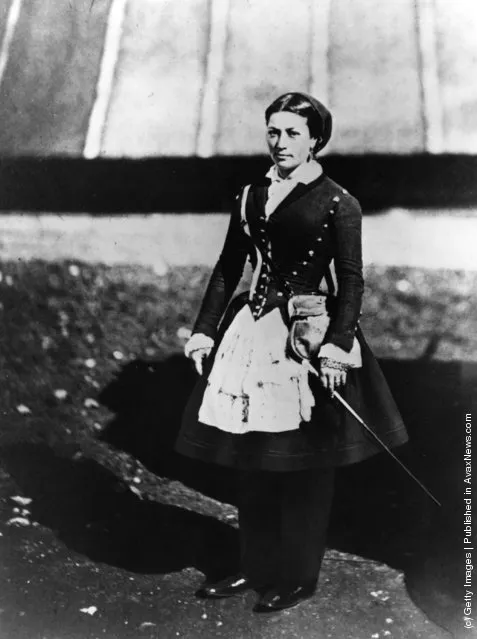
A vivandiere, a female soldier selling provisions and spirits, with the Allied forces during the Crimean War. (Photo by Hulton Archive/Getty Images)
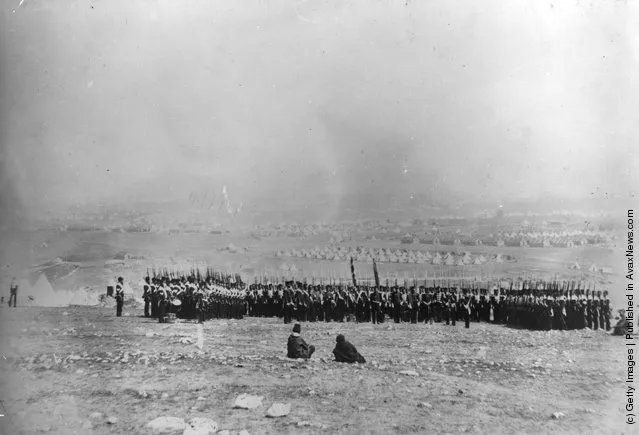
Colonel Shadforth and the 57th Regiment during the Crimean War. (Photo by Hulton Archive/Getty Images)
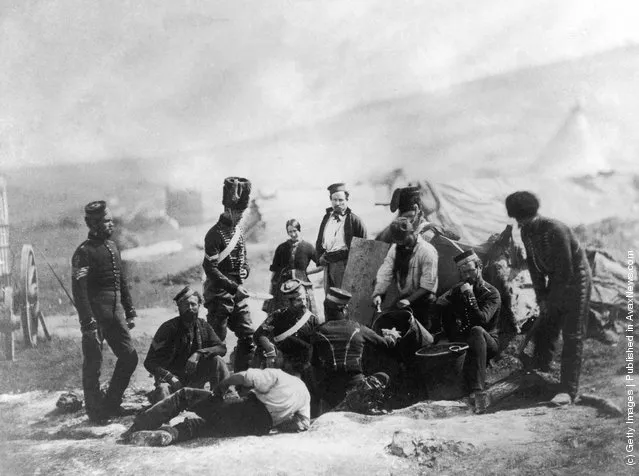
8th Hussars soldiers preparing a meal at the Cookhouse in the field during the Crimean War, 1855. (Photo by Roger Fenton/Getty Images)
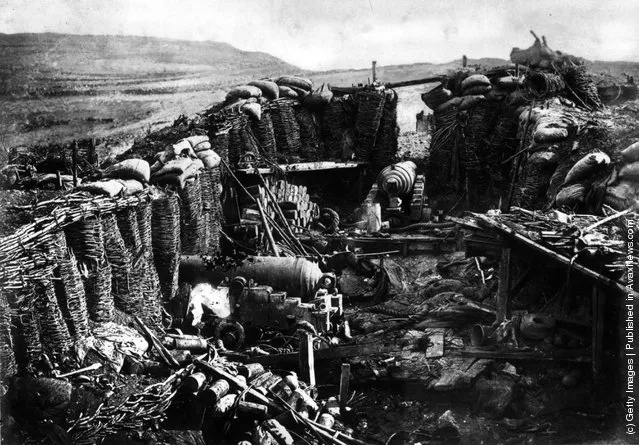
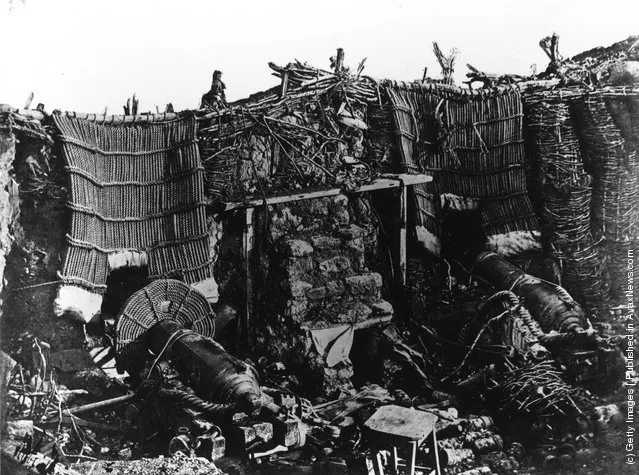
The interior of a redan, Russian fortifications at Sebastopol, after evacuation by the Russians following its fall to British and French troops during the Crimean War. (Photo by Hulton Archive/Getty Images)

English war photographer Roger Fenton (1819 – 1869) in the uniform of a Zouave soldier. (Photo by Marcus Sparling/Getty Images)
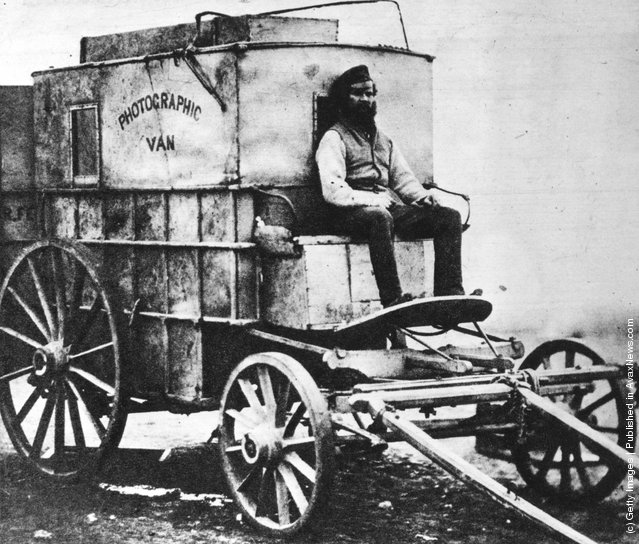
A mobile darkroom used by photographer Roger Fenton during the Crimean war, where he developed negatives within 10 minutes of their exposure. His assistant Marcus Sparling is seated on the box. (Photo by Hulton Archive/Getty Images)
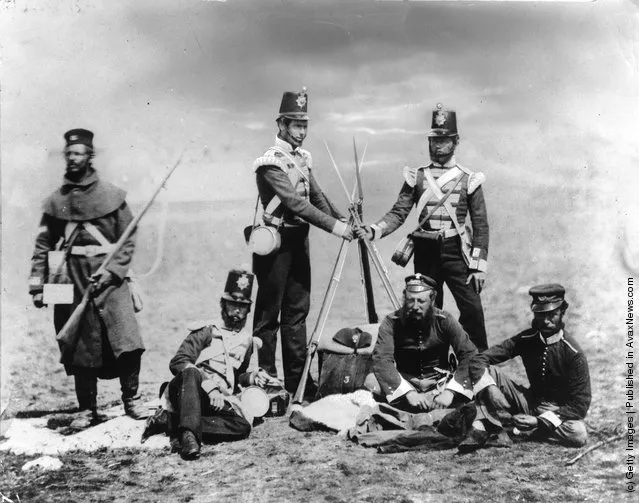
British soldiers during the Crimean War. (Photo by Roger Fenton/Getty Images)
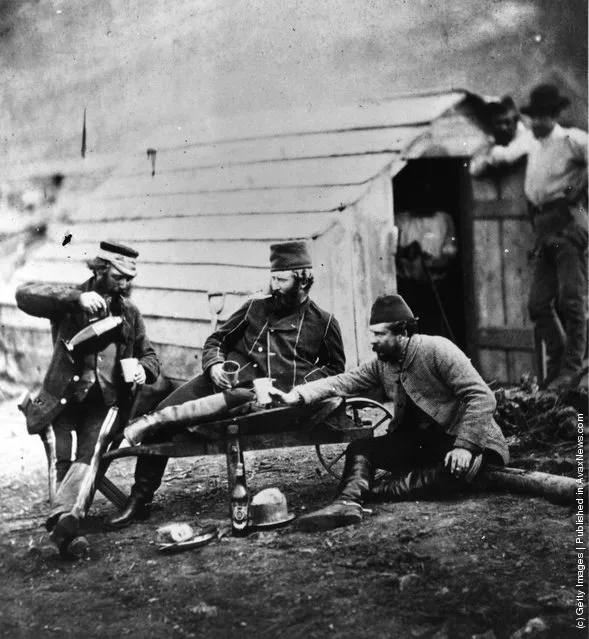
Captain Brown, Colonel Lowe and Captain George in their camp during the Crimean War. (Photo by Roger Fenton/Getty Images)
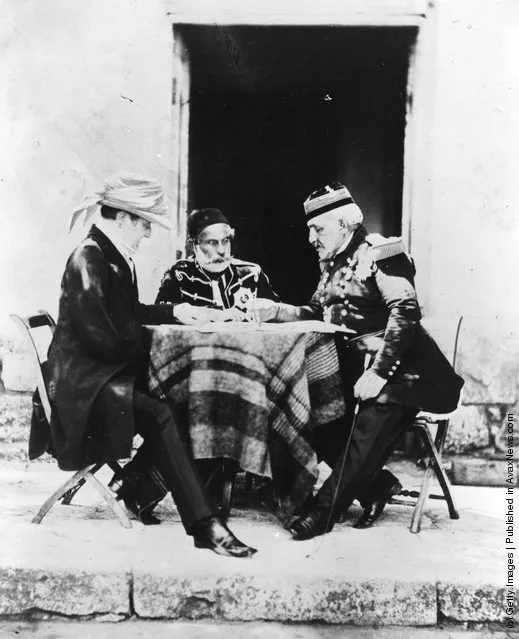
The War Council's commanders-in-chief of the Allies, Lord Raglan, Omar Pasha and General Pelisier having a meeting during the Crimean war. (Photo by Roger Fenton/Getty Images)
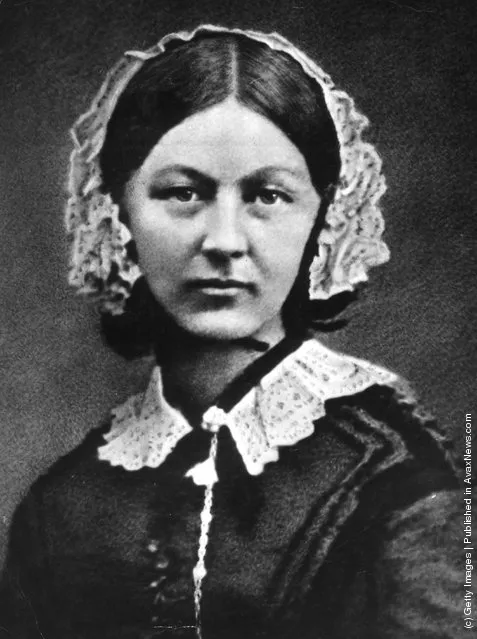
English nursing reformer Florence Nightingale (1820 – 1910), who became the first woman to receive the Order of Merit for her tireless efforts during the Crimean War. (Photo by Hulton Archive/Getty Images)

Sir William Howard Russell (1820 – 1907), war correspondent of “The Times”. (Photo by Roger Fenton/Getty Images)
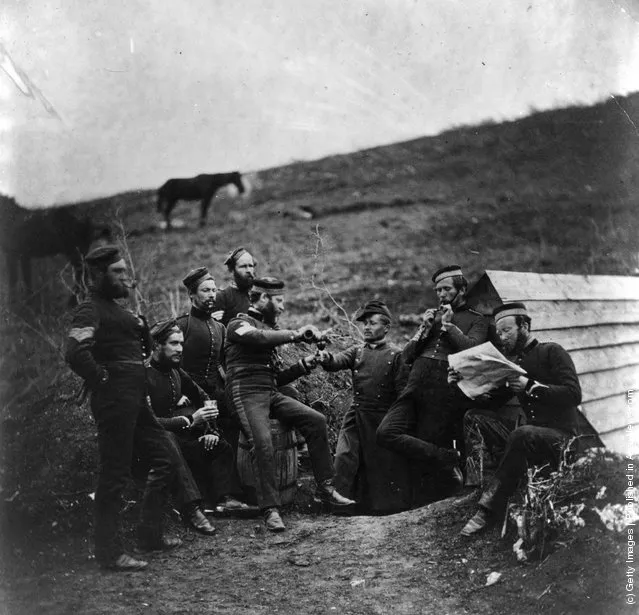
English and French soldiers having a drink together in the lines before Sebastopol during the Crimean War. (Photo by Roger Fenton/Getty Images)
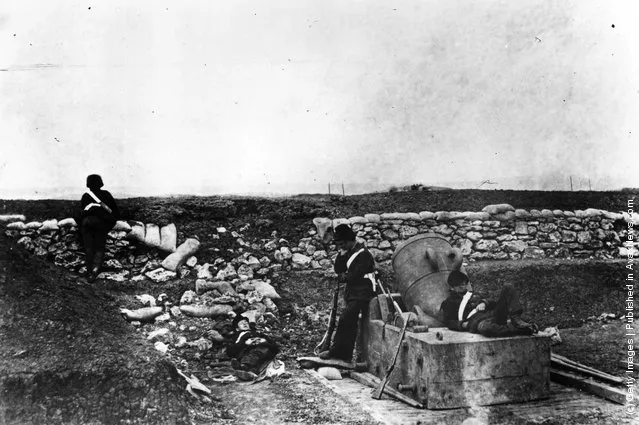
Mortar teams having a rest during the siege of Sebastopol in the Crimean War. (Photo by Roger Fenton/Getty Images)
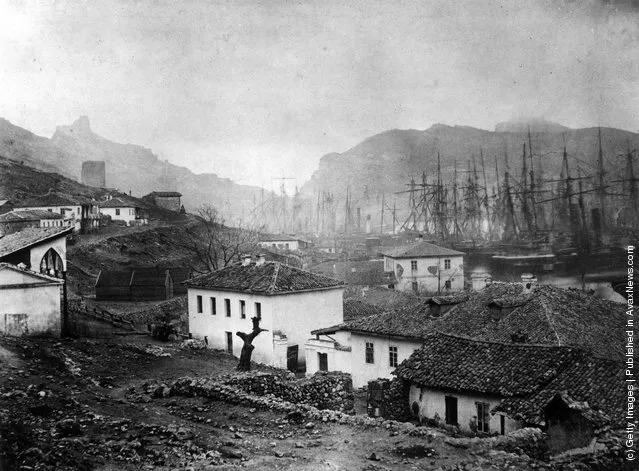
Balaklava, Ukraine, looking seaward with the harbour crowded with sailing ships. Balaklava was the British headquarters during the Crimean war. (Photo by Roger Fenton/Roger Fenton/Getty Images). 1855
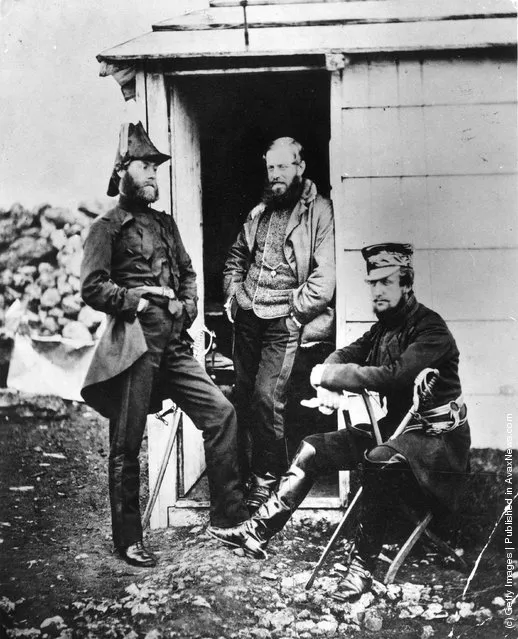
Officers on the staff of Lt General Sir G Brown during the Crimean campaign. (Photo by Hulton Archive/Getty Images). Circa 1855
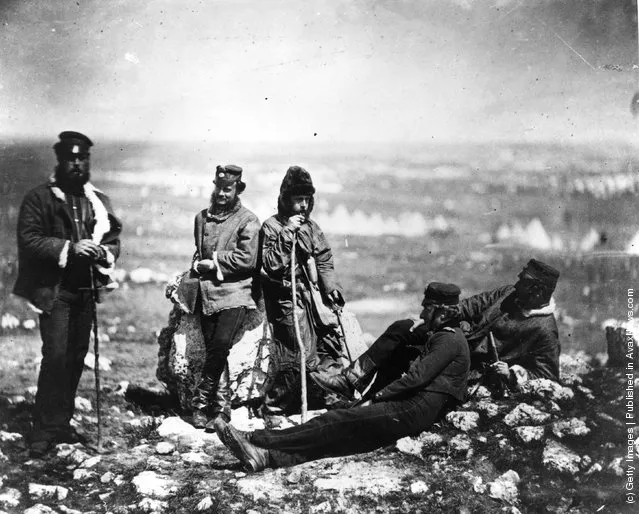
Officers of the 89th Regiment, Princess Victoria's Royal Irish Fusiliers, at Cathcart's Hill in the Crimea. (Photo by Hulton Archive/Getty Images). Circa 1855
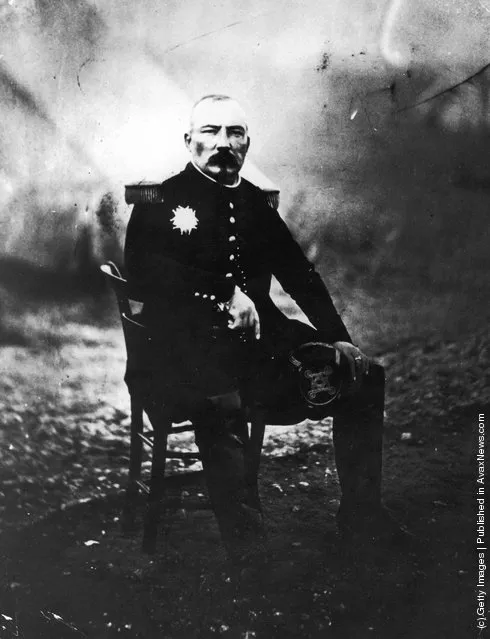
General Pierre Bosquet (1810 – 1861), French military commander during the Crimean War. Witnessing the British charge of the Light Brigade at the battle of Balaklava, he remarked “C'est magnifique, mais ce n'est pas la guerre” (It's magnificent, but it is not war'). (Photo by Roger Fenton/Roger Fenton/Getty Images). 1856
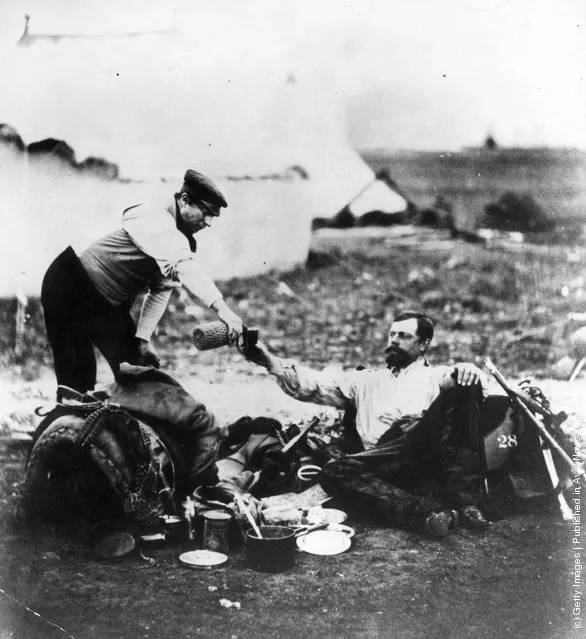
Lietenant Colonel Halliwell being poured a drink at an army camp in Russia, during the Crimean War. (Photo by Roger Fenton/Roger Fenton/Getty Images). 1855
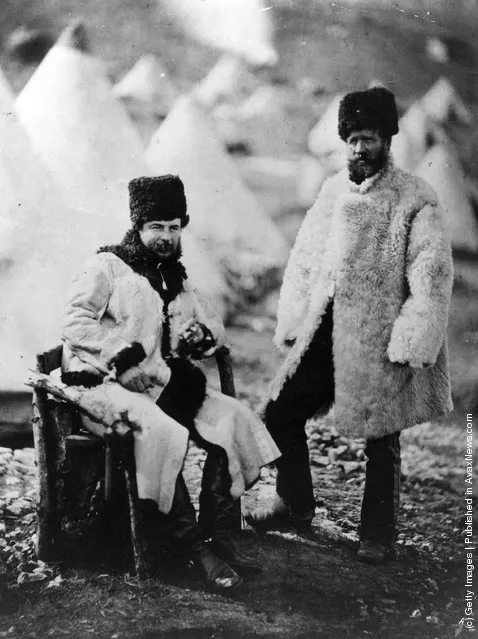
Captain Brown of the 4th Light Dragoons, seated, and his servant in winter dress, in Russia, during the Crimean War. (Photo by Roger Fenton/Roger Fenton/Getty Images). Circa 1856
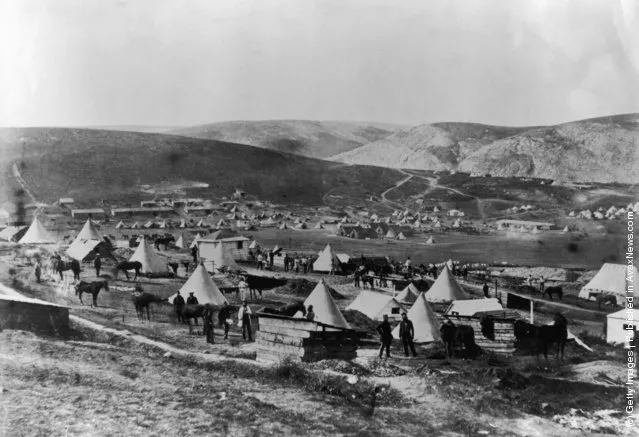
The British 4th Light Dragoons encamped in the Crimea, circa 1855. (Photo by Roger Fenton/Hulton Archive/Getty Images)
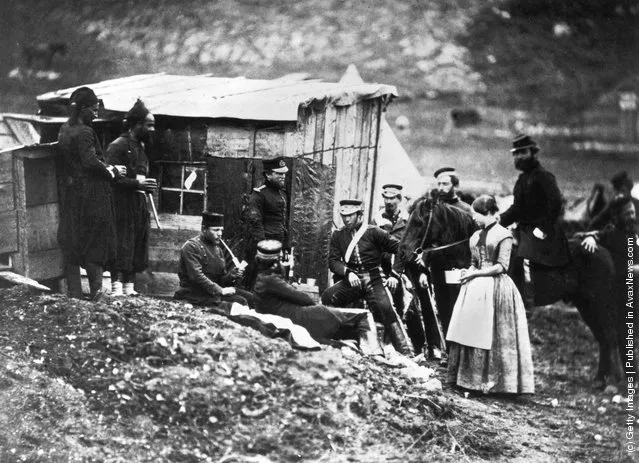
Members of the 4th Light Dragoons at camp in the Crimea, circa 1855. (Photo by Roger Fenton/Hulton Archive/Getty Images)
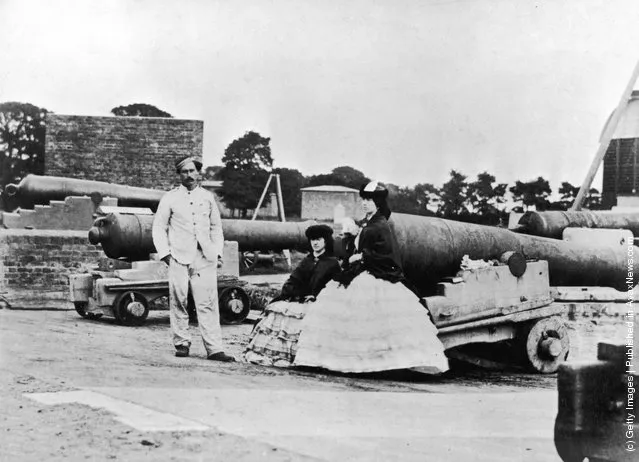
A soldier and two woman pose next to a row of cannon during the Crimean War, circa 1855. (Photo by Robertson/Hulton Archive/Getty Images)

A cartoon from the Crimean War showing a small boy with a captured Russian soldier, 1854. From Punch magazine, Vol 27, Page 151 (Photo by Hulton Archive/Getty Images)
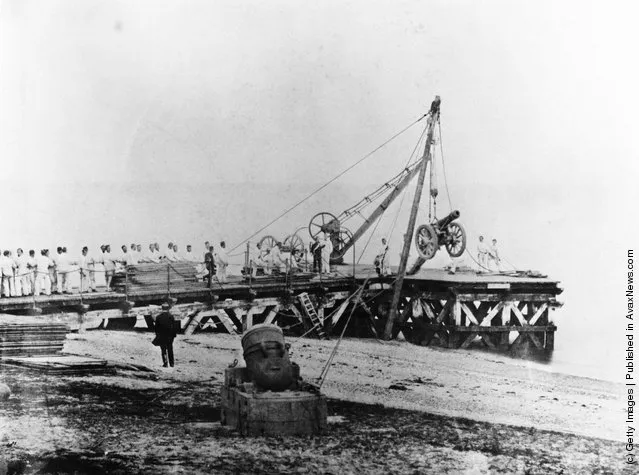
A British cannon being loaded onto a shop at Sevastopol, 1855. (Photo by Hulton Archive/Getty Images)
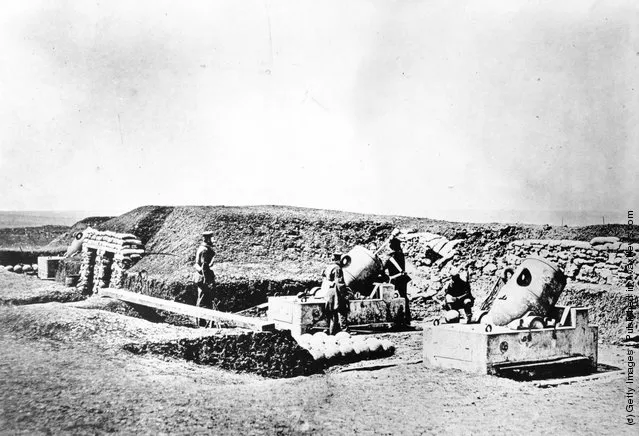
Mortar batteries in front of Picquet House, Light Division, during the Crimean War, circa 1855. The British soldiers are positioned behind a berm, or raised earth fortification. (Photo by Roger Fenton/Hulton Archive/Getty Images)
18 Jul 2011 11:57:00,
post received
0 comments
